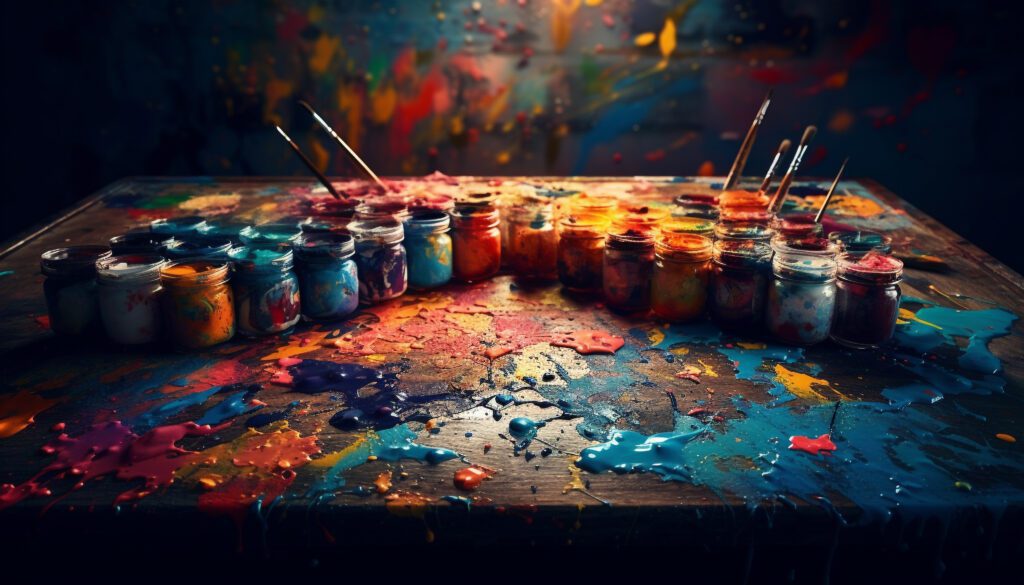Introduction:
Welcome to this step-by-step guide on color mixing techniques, packed with valuable tips and ideas for artists. By mastering the art of color mixing, you can create vibrant and visually captivating paintings. Let’s explore the process together.
Step 1: Gather Your Materials
To get started, ensure you have all the necessary materials, such as primary colors (red, blue, yellow), a palette, brushes, water or medium, and a canvas or painting surface.
Step 2: Understand the Color Wheel
Before diving into color mixing, familiarize yourself with the color wheel. It consists of primary, secondary, and tertiary colors. Primary colors, including red, blue, and yellow, cannot be mixed. Secondary colors like purple, green, and orange are created by mixing two primary colors. Tertiary colors are further mixtures of primary and secondary colors.
Step 3: Start with a Basic Palette
Develop your understanding of color mixing by starting with a limited palette. Begin with primary colors and white, gradually expanding to incorporate secondary and tertiary colors. Practice mixing various shades and tones using this basic palette.
Step 4: Mixing Complementary Colors
Creating contrast and vibrant colors can be achieved by mixing complementary colors. Complementary colors are opposite each other on the color wheel, such as red and green, blue and orange, or yellow and purple. Experiment with different proportions to achieve your desired effect.
Step 5: Gradual Mixing and Blending
When mixing colors, start with small amounts and gradually adjust until you achieve the desired hue. Use a palette knife or brush to blend the colors smoothly. Observe the color changes and make adjustments as needed.
Step 6: Experiment with Color Temperature
Colors have different temperatures that evoke various emotions. Warm colors like reds, yellows, and oranges create energy and excitement, while cool colors like blues, greens, and purples evoke calmness and tranquility. Experiment with mixing warm and cool colors to achieve balance and contrast in your artwork.
Step 7: Explore Color Harmonies
Color harmonies involve selecting colors that complement each other to create pleasing compositions. Common harmonies include monochromatic (shades and tints of a single color), analogous (colors adjacent on the color wheel), and triadic (colors evenly spaced on the color wheel). Experiment with different harmonies to add visual interest to your paintings.
Step 8: Use Color Mixing Charts
Consider creating color mixing charts as a helpful reference tool. Divide your palette into sections and mix different color combinations, labeling each section. These charts provide a clear understanding of the range of colors you can achieve and serve as a handy reference while painting.
Step 9: Practice, Observe, and Learn
Regular practice is essential for mastering color mixing techniques. Observe how colors interact with one another and how they appear under different lighting conditions. Experiment with various subjects and color combinations. Learn from fellow artists, attend workshops, and explore resources like the one available at urartstudio.com to deepen your understanding and enhance your artistic skills.
Remember, these steps are guidelines, and painting is a form of art that encourages creativity. Feel free to experiment, take risks, and develop your own unique style.
For more comprehensive information and additional resources, brows through our website https://urartstudio.com to explore the wealth of free resources available.


